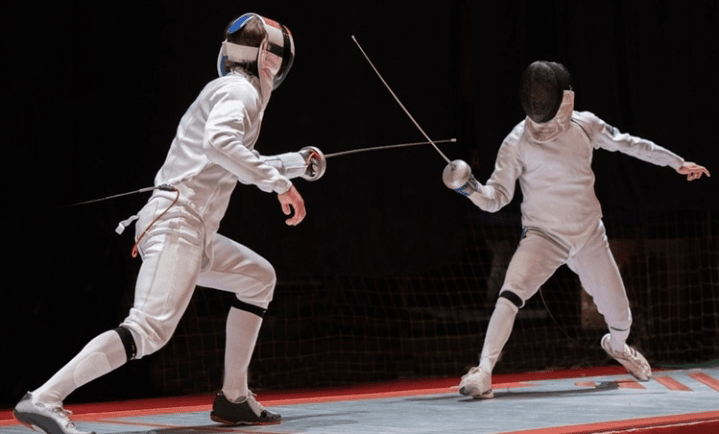Cutting Edge Materials in Fencing Sports…
Swords, masks and clothing have all seen changes, the most recent development being the transparent mask, intended both to improve visibility for the competitor and make the sport more enjoyable for the spectator. Advanced materials for fencing blades and uniforms as well as the introduction of new metals and alloys is changing the sport for the better.
The Blade
There are three disciplines in modern fencing: foil, epee and sabre, each involving a different target area employing a different weapon and demanding a different technique. A feature common to all three disciplines is that the blades regularly break, turning a safe piece of sports equipment into a potentially lethal weapon.
Analysis of the fracture surfaces reveals the characteristic features of fatigue crack growth, which is understandable given that a successful attacking lunge can cause a blade to bend with a radius of curvature in the region of 200mm. Repeated bending during a blade’s lifetime, coupled with surface damage from impacts with the opponent’s blade, results in the accumulation of damage in the form of microcracks, which initiate fatigue failure. This is a particular problem with cheaper blades made from medium carbon steel.
Fencing Blade Materials and Manufacture
These blades are manufactured by quenching and tempering at 300 to 500°C, resulting in a tempered martensitic structure with a yield stress of between 1500 and 1700MNm-2. A more expensive foil material is maraging steel, which has a yield stress in the region of 2000MNm-2 and an increased lifetime.
The critical defect size for fast fracture of the maraging steel blades is over four times larger than in standard carbon steel types, which explains the extended lifetime. However, although the lifetime of the maraging blades is longer, they still fail by brittle fracture, resulting in a sharp edge that can penetrate the opponent’s fencing uniform and cause serious injury.
A variety of other materials have been investigated for the foil, from glass and carbon fibre composites to dual-phase steels that contain fibres of martensite with an interpenetrating austenite phase. This dual-phase steel material has demonstrated high strength and exceptional toughness, with Charpy impact tests showing that blade samples are able to absorb 360J impact energy without breaking into two pieces, compared to 10J for conventional medium carbon steel blades.
The toughness originates from the inclusion of the austenite phase, which is ductile under the impact conditions and deflects the crack along the length of the blade, requiring re-initiation in an adjacent fibre of martensite if the growth is to continue.
Surprisingly this grade of steel has never become a standard production grade for fencing blades. Two reasons have been cited, one of which is the higher cost, the other the different feel of the blade, which makes it unpopular with fencers. The same explanations apply to glass and advanced materials for fencing including carbon fibre composite blades.


